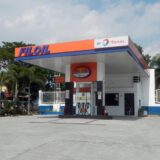Analysis of the automotive lubricants market—Nigeria and South Africa
Nigeria and South Africa rely heavily on imported raw materials for automotive lubricants. However, crude oil price volatility and devaluing currencies should help boost local production. A combined market of USD2.14 billion is driven mainly by engine oil demand, but there has been a perceptible rise in end-user demand for other lubricants such as transmission oils, gear oils and coolants.
Rising lubricant demand in these two countries are being driven by a growing middle class, which is boosting vehicle sales. Nigeria’s motorisation rate is 8.5% per annum and is tied to the country’s gross domestic product (GDP), which has increased by 7% in the past decade. Meanwhile, South Africa is a well-established vehicle manufacturing hub in Africa and this sector is expected to flourish over the next three to seven years.
“Analysis of the Automotive Lubricants Market—Nigeria and South Africa” is part of the Future of Chemicals & Materials in Infrastructure & Mobility Growth Partnership Service program of Frost & Sullivan, which also covers construction chemicals and materials including paints and coatings, industrial adhesives, cement and cement additives, thermal insulation and lubricants.
The vehicle parc, including old and new vehicle models, presents myriad opportunities for automotive lubricant manufacturers. On the one hand, used cars require more frequent lubricant changes, and on the other, newer models require higher-quality lubricants.
In Nigeria, about 80% of the vehicle fleet are second-hand vehicles that will require more frequent oil drains in the long term, thus resulting in higher lubricant volumes.
“Improved vehicle technology in newer model vehicles will require fewer lubricant drains,” said Visionary Science Industry Analyst Lynessa Moodley. “The market is ultimately gravitating towards higher-quality, specialised and synthetic lubricants with an increase in end user awareness on the importance of lubricant drains. This can primarily be attributed to pending government legislation regarding emissions, improved engine technology and original equipment manufacturers’ requirements for fuel efficiency.”









